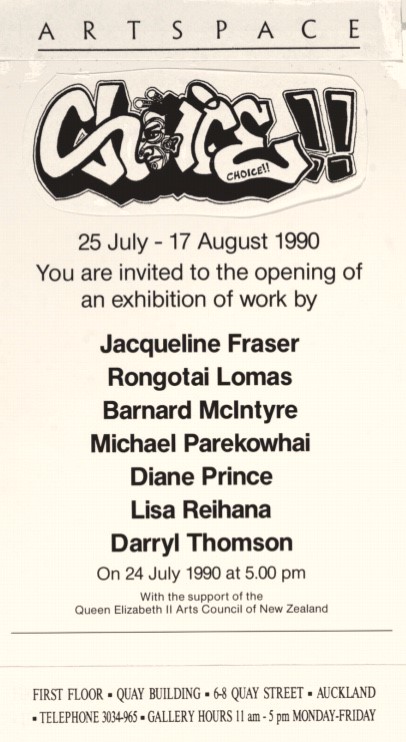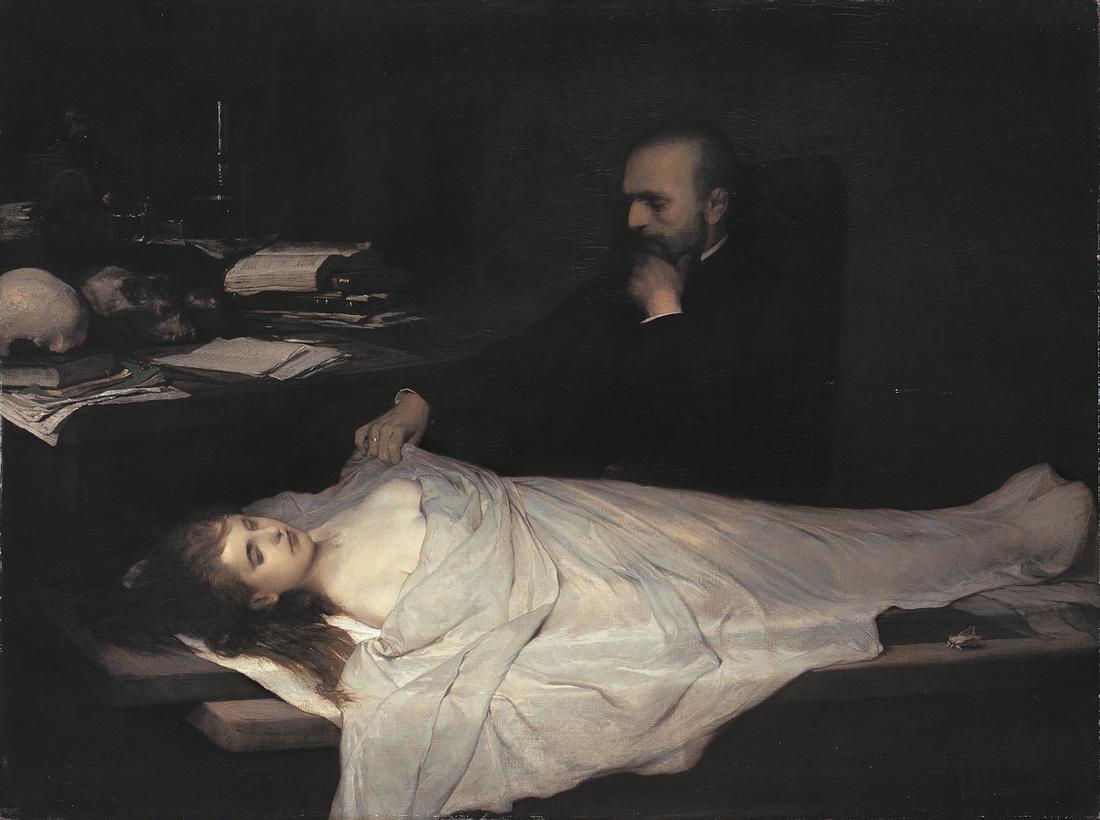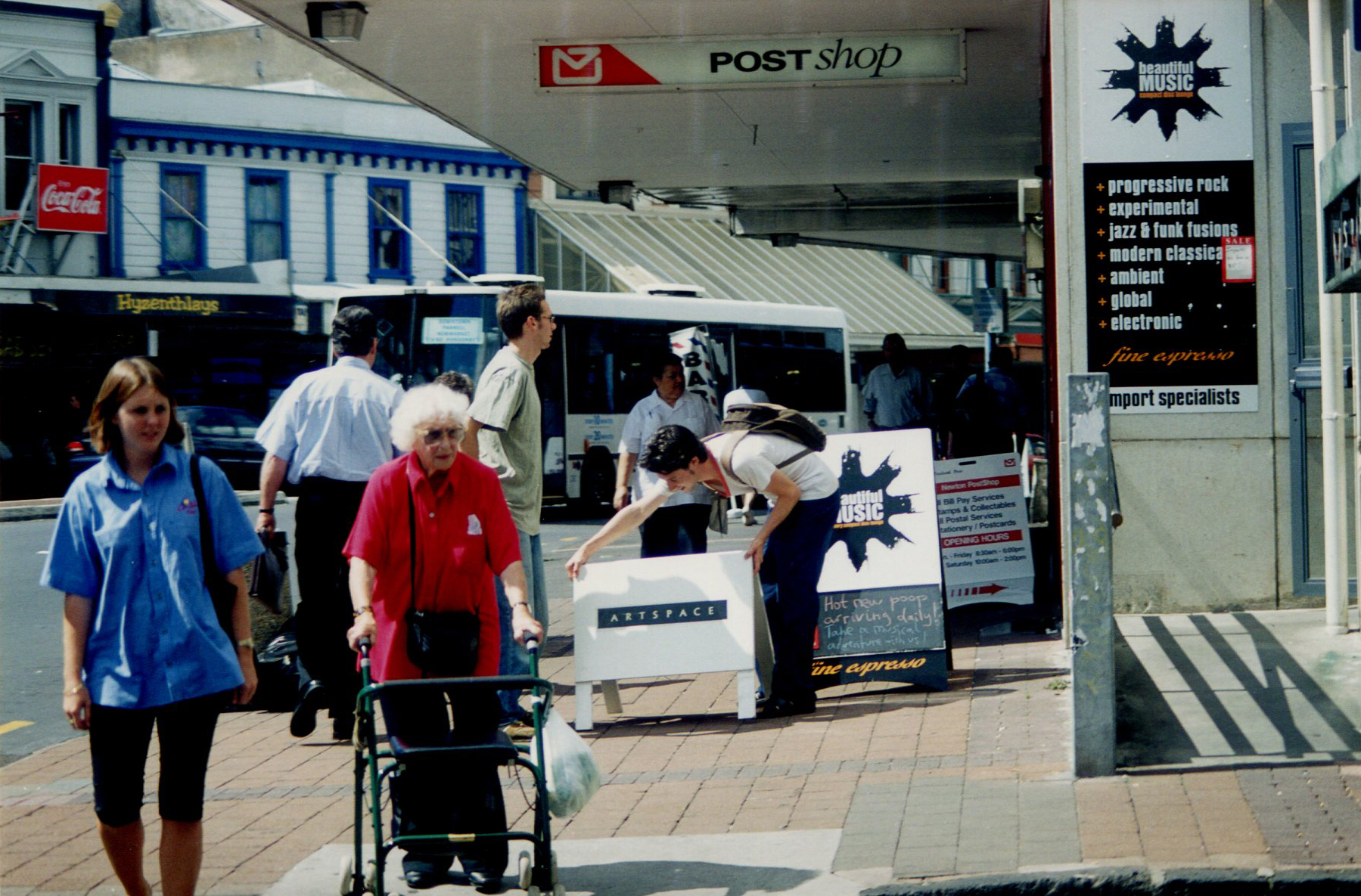.
Time flies. Last week, curator George Hubbard emailed me to remind me that the thirtieth anniversary of his influential show Choice!, at Auckland’s Artspace, was almost upon us. How old we are.
Choice! challenged prevailing assumptions about what contemporary Māori art was or could be. By the end of the 1980s, contemporary Māori art—gallery-type art, anyway—was largely seen as centred on two groups. First, the Māori modernists, male artists who emerged in the 1960s (Hotere, Matchitt, Whiting, Wilson, Graham, Muru, Adsett, etcetera) and those operating in their wake. Second, women artists who emerged in the 1980s (Karaka, Rapira Davies, Kahukiwa, et al.). In 1990, Choice! ushered in a new generation of Māori artists who were, it implied, more than just ‘bearers of tradition and children of nature, re-presenters of the land and the past’.
The show was something of a mixed bag. It included outliers like Darryl Thomson (graffiti artist), Rongotai Lomas (filmmaker), and Barnard McIntyre (DIY neo-geo sculptor), but there were also Diane Prince (who could be considered part of the 1980s cohort of women artists) and Jacqueline Fraser (already prominent, but not as a Māori artist). It was the first gallery outing for Lisa Reihana’s iconic anti-racist video Wog Features, with its kids-TV-style stop-frame animations. And, crucially, it launched Michael Parekōwhai, still an Elam undergrad, with his cool, show-stealing, conceptual-art word sculptures. He would prove to be the show’s big discovery.
Throwing caution to the wind, Hubbard and his Pākehā collaborator Robin Craw penned a provocative polemic to accompany the show—‘Beyond Kia Ora: The Paraesthetics of Choice!’—warning that Māori art risked becoming ‘merely an ethnological echo of a hyper-historicised culture’. It was never clear exactly who were the targets of its shotgun arguments—presumptive Pākehā or the Māori-art establishment itself—but there certainly was a lot of smoke.
There were consequences. Like the Sex Pistols gig at Manchester’s Lesser Free Trade Hall in 1976, Choice! was important not because many people saw it (apparently only 555 visits were recorded), but for its profound and ongoing influence on those few who did. One of Parekōwhai’s word sculptures was acquired by bellwether collectors Jim Barr and Mary Barr, and all three would ultimately end up in public collections (at the Govett-Brewster, Auckland Art Gallery, and Te Papa). The show was reviewed by Giovanni Intra for Stamp and by Stephen Zepke for Antic, which also reprinted ‘Beyond Kia Ora’. I wrote on Parekōwhai for Art New Zealand and earmarked two of his sculptures for the Headlands show in Sydney (in which he would be the youngest artist), while Tina Barton suggested that Hubbard curate a Māori art show for Auckland Art Gallery (which ultimately became Korurangi: New Māori Art, 1995).
Choice! bridged contemporary Māori art and postmodernism. Around the time, I remember, some dismissed it as pandering to Pākehā taste—and there’s truth in that. But Choice! also saw, responded to, and harnessed an exciting new wave emerging in Māori art and creativity that is still playing out. In 2001, 2011, and 2017, Fraser, Parekōwhai, and Reihana would represent New Zealand at the Venice Biennale. Choice! is a textbook example of how a small show with a small budget and a small audience can be a gamechanger.
•


